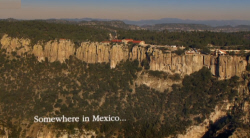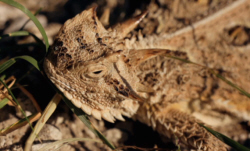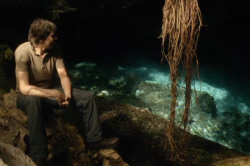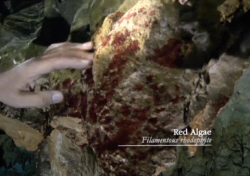Mexico
A Vibrant Hub of Life
Home!

Somewhere in Mexico
Somewhere in Mexico… "In the beginning, God created the heaven and the earth. And the earth was without form and void. And darkness was upon the face of
the deep."
Home is such an evocative word. I mean, it will mean something to you. The place you went to school, the place you live, the place where your kids had
their first Christmas. But in a scientific sense, what does it mean?
It means… that the ingredients are there for you to live. An atmosphere, food, water. You need the temperature to be right. Home is a place that has
the things you need for your biology and chemistry to work. And it's no less evocative for that.
This is Mexico. A country rich in the ingredients that set our world apart. It's not a bad place to come because, with about 1% of the land surface
area of our planet, it's home to 12% of the species. There are 26,000 plant species here, there are 700 species of reptiles and 400 species of mammals.

Lizard
It's also been home to some of the worlds great civilisations. The Maya built their temples out there in the forest here for thousands
and thousands of years. Mexico is bursting with life. And if you know where to look, hidden inside these creatures are
clues that tell how this planet became their home.
First stop is in the south east of the country. An area covered in thick jungle. The Yucatán is a strip of essentially pure limestone that
separates the Caribbean from the gulf of Mexico. And it's got all the ingredients you might think you need for a rich and diverse ecosystem. The
tropical sun warms the forest, delivering precious energy to each and every leaf. Oxygen escapes from the plants and trees, which is breathed in
by the forest animals. And where they can, each of them draws deeply from the region's hidden water supply.
But there are some of the ingredients you need to grow this tropical forest that are far more important than others.
You might think that this place would be awash with water. It does rain a lot and it's incredibly humid. But actually, there are no surface
rivers at all on the Yucatán Peninsula because the water just seeps into the porous limestone.

Cenote
That's where these things come in. These are cenotes. They're caverns dissolved out of the limestone by the rain. And they collect water. And
they play a vital role in the ecosystem. I mean, the forest changes when you get around a cenote. Just listen to that. Those are frogs. And you
don't hear those frogs anywhere else in the forest, just around the cenotes. The cenotes are flooded caves that have been cut off from the
outside world for thousands of years. Lilies, troglodytic fish, even the occasional turtle, all thrive around the openings of these freshwater wells.

Red Algae Filamentous rhodopbyte
As I head deeper into the cave, the temperature drops and the light fades. One by one, the ingredients I depend upon begin to disappear. Yet even
here, far from the soil and air, strangely-coloured algae still find a home in the water.
If there's one thing that unites every form of life in the cenote, in fact, every form of life out there in the forests, in fact, every form of
life we've ever discovered anywhere on planet Earth, it's that it has to be wet.
Only on our home does water run freely between the skies, oceans, rivers and on, into every living thing.
To understand why life and water are so intertwined, we need to look a little deeper into one of the strangest substances we know.



